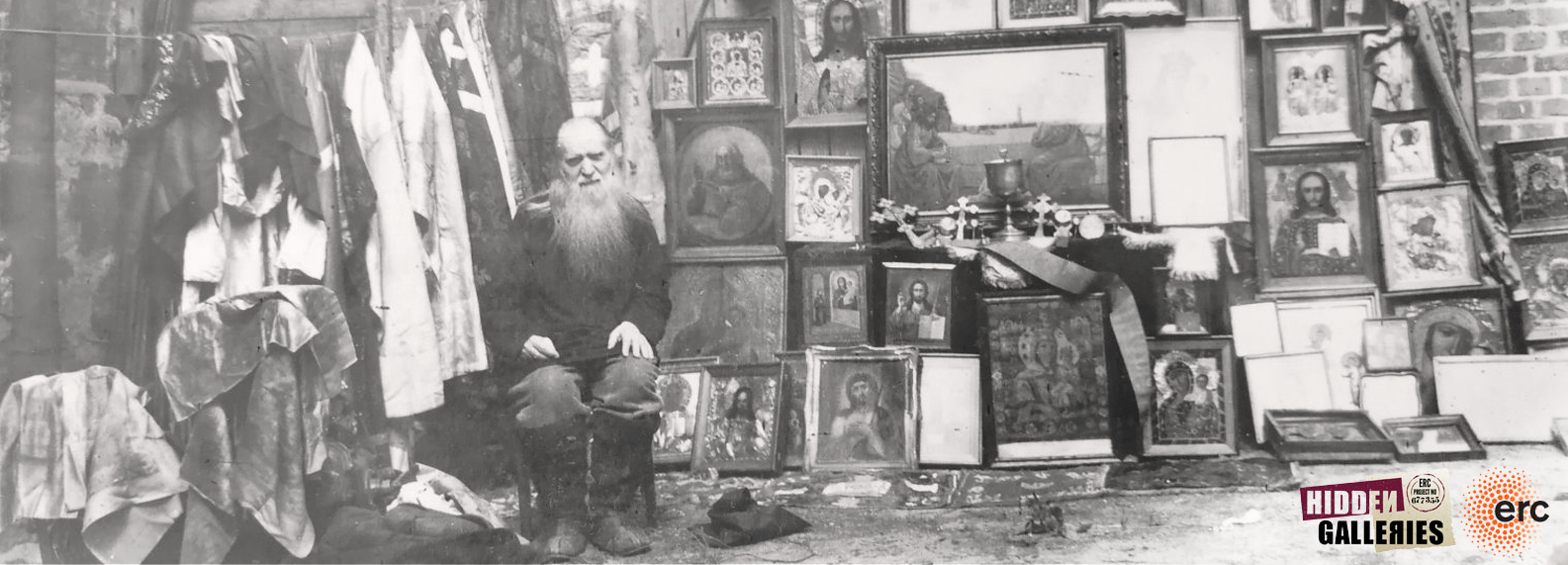Confiscated group photographs
Item set
Title
Confiscated group photographs
Description
Group and community photographs feature heavily amongst the corpus of confiscated images in the secret police archives. Such images were often taken at pilgrimages, religious festivals and special gatherings and were a means for the community to materialise communal memory and present their values and beliefs in distinctive visual form. For the secret police they were an invaluable source of information and a convenient means of tracing networks and personal relationships in the religious underground. Arrested members of groups could be forced to name individuals with to whom they had been photographed. These archives, therefore, represent an important resource for understanding how religious groups chose to represent themselves and how the totalitarian system used images of religious groups in order to identify, trace and incriminate their members. Consequently, photographs of religious groups in the secret police archives have a dual character as both religious justification and incrimination.
Creator
James A. Kapaló
Publisher
Hidden Galleries (ERC project no. 677355)
Bibliographic Citation
James A. Kapaló, "Confiscated group photographs"
Date Created
2019
Items
-
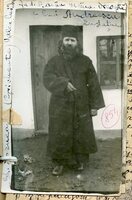
Confiscated photographs belonging to an Old Calendarist monk
These two photographs were confiscated in 1936 by the police from an Old Calendarist monk, Gheorghe Ștefan Dorneanu, also known as father Grichentie. The first photograph shows Dorneanu dressed in monastic clothes in front of what seems to be a small house or a skete. The left and upper edges of the photograph contain a handwritten text that states: „Gh. Dorneanu (Grichentie) Valea lui Ion jud. Bacău mâna dreaptă a lui Andreescu Eustațiu,” which can be translated as „Gh. Dorneanu (Grichentie) Valea lui Ion, Bacău County, the right hand of Andreescu Eustațiu.” The second photo depicts a group o -
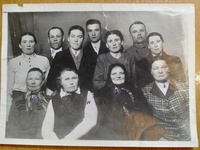
Agent operation "Zavet" against Jehovah's Witnesses, Ukraine 1953-1955
This photograph was enclosed in a KGB surveillance file from 1952-1955 on Jehovah’s Witnesses in the Rivno region, western Ukraine. The image pictures a group of Jehovah’s Witnesses from the Rivno region. It was enclosed in an envelope along with 6 other confiscated or intercepted photographs. Each depicted person was marked with a number and on the reverse side a secret police officer wrote their names, date of birth, information on their origin and place of residence, as well as their role within the Jehovah’s Witness organization, such as: “ordinary member of the underground,” “active Jehov -
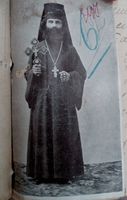
Photo-icons of Inochentie of Balta Ukraine
The four photo-icons of Inochentie of Balta were confiscated by the Soviet secret police in 1921 from the Inochentist community of the village of Lipetcoe (Balta county, Odessa Governorate). The village of Lipetcoe was the spiritual centre of Inochentism, where believers established an underground monastery and a utopian communal society called Gradina Raiului (the Garden of Paradice). In September 1920, a few months after the Red Army occupied Lipetcoe, Soviet authorities closed the monastery and expelled a number of Inochentist leaders from Gradina Raiului. The second major repressive ope -
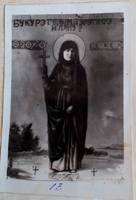
Confiscated images of Archangelist women Moldova
These photographs were confiscated by the secret police of the Moldavian SSR from a community of Archangelists in 1952. Archangelism inherited the iconographic tradition of Eastern Christianity and developed them creatively using modern techniques of photograph, photocopying, collage and multiplication. The first image was produced using the technique of photo collage. The creator of the image has utilised a copy of an Orthodox icon showing a female saint replacing the face of the saint with a photograph of the face of Elena Culiac, venerated by Archangelists as the embodiment of Virgin Mary o -

Confiscated family album Bessarabia and Odessa
These photographs are part of a family album found on a woman who tried to cross the border between USSR and Romania that was confiscated by the Soviet secret police in 1940. They depict different moments from the life of the family, such as a wedding and a day spent at the seaside in Odessa. The album contains images of members of the family at different ages and of some of the family’s friends. For over a hundred years both banks of Dniester river were part of the Russian Empire until 1918 when Bessarabia united with Romania and the river became frontier between Romania and the Soviet Uni -
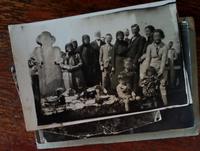
Commemoration of the dead by a family in Bessarabia
The photograph shows a family from Bessarabia in a cemetery of Chilia Nouă celebrating Paștele Blajinilor (in Romanian) or Radonitsa (in Russian), the day when the Orthodox Christian families commemorate their deceased relatives. Almsgiving has a central place in the commemoration of the dead in Orthodox Christian tradition. It is believed that by offering to each other bread, cookies, fruits, tableware items and drinks, the believers redeem the sins of their deceased relatives, and satiate the dead’s thirst and hunger. This is why the grave in the image is covered with various items that we -
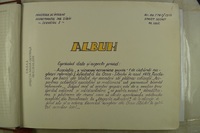
Secret police photo album on a Hungarian Calvinist Church Choir Romania
These images come from a photo album compiled by the Securitate on the Hungarian Calvinist Church Choir in the town of Ocna Sibiului (Vízakna), Transylvania. The first image shows the title page of the album with a short introduction to the choir and its supposed activity. In the second image, we can see photos which were most probably taken by the secret police displaying the decorated walls of the choir’s meeting place. The third image includes shots taken in the usual fashion of crime scene photographs of items confiscated from the choir during a secret police raid. The fourth image shows c -
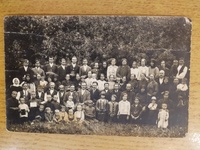
Seventh-day Adventist community photograph Ukraine
This photograph was confiscated in 1948 by the Soviet secret police from a Romanian peasant repressed as a follower of the Reformed Adventist Church in Chernivtsi oblast (former Northern Bukovina), Ukraine. The photograph was included in his criminal file. It pictures a community of Romanian Adventists who are festively dressed with most of them holding Bibles as a symbol of their faith. Apart from this photograph the police also confiscated a notebook with religious songs handwritten in Romanian language. According to the file, Vasilii Litvan was a poor, illiterate Romanian peasant who lived -

Confiscated group photograph of Inochentists Romania
This confiscated photograph was included in a personal file of an Inochentist leader alongside several others collated by the Romanian Securitate. The image shows the male leader flanked by two women from the community. Such group and community photographs feature heavily amongst the corpus of confiscated images in the secret police archives in Romania as for the secret police they were a convenient means of tracing networks and personal relationships of the religious underground. The case file does not state when the images were confiscated but from an Informer Report that appears elsewhere -
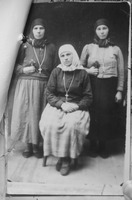
Confiscated photographs of Archangelists Moldova
These confiscated photographs come from a 1938 Military Court file from Romanian Bessarabia (today’s Republic of Moldova). On the 25th August 1938, a house search was conducted of the home of Vladimir Draguțan in the village of Recea, county Lăpușna. Amongst the items “used for Inochentist propaganda” discovered at Vlademir’s home were a number of religious booklets, devotional images of Alexandru Culeac, the founder of the movement, and Inochentie of Balta, a number of small crosses and several photographs of the community. The first image shows three women one of whom is named in the case f -

Confiscated postcard of Old Calendarists in Bălți County
This photograph, reproduced as a postcard, was confiscated by the police in 1936, from Pavel Caras, a former monk, who was wandering the villages in Bessarabia distributing these post cards to people. The photo was taken during the 1930s in Albineț, Bessarabia(today Republic of Moldova), which was one of the most important centres of Old Calendarist activity during the period. It depicts the Old Calendarists from Albineț standing in front of their church which appears to be under construction. The photo contains a small description in the lower right hand corner which states: ”In memory of t -

Confiscated photographs from a clandestine religious community Budapest
These images were confiscated from an underground Pentecostal community in Budapest-Pesterzsébet in 1972. The first image depicts a baptism where pastor József Németh is baptising a young girl. The second image is a group-picture of pastor József Németh and another five congregants in white who had just been baptised. They are standing with presumably other congregants and family members. The third image depicts pastor József Németh preaching to his congregation in their hidden house church. Prior to confiscation, the photos belonged to pastor József Németh. The photos were taken by a mem -
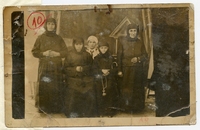
Confiscated photograph of Old Calendarist nuns Romania
This photograph was confiscated in 1941 by the Siguranța, the Romanian secret police prior to Communism. It depicts four Old Calendarist nuns, also referred to as Stilists. A short handwritten text on the reverse states that it was taken on September 1st, 1939. The nuns are dressed in standard monastic clothes, their heads are covered and their black tunics entirely cover their bodies. In their hands, they hold “metaniere”, Eastern Orthodox prayer ropes. The “metaniera” is an important part of monastic dress and is used during prayer to aid concentration. The composition of the photograph and
